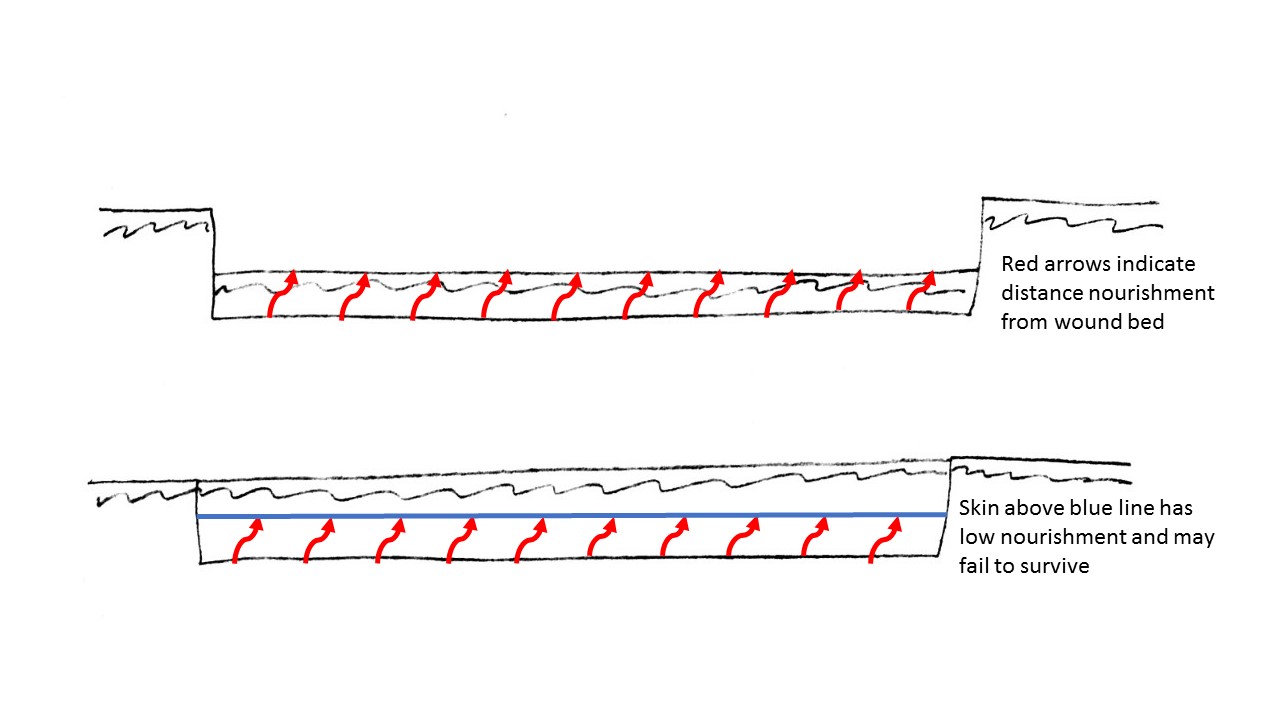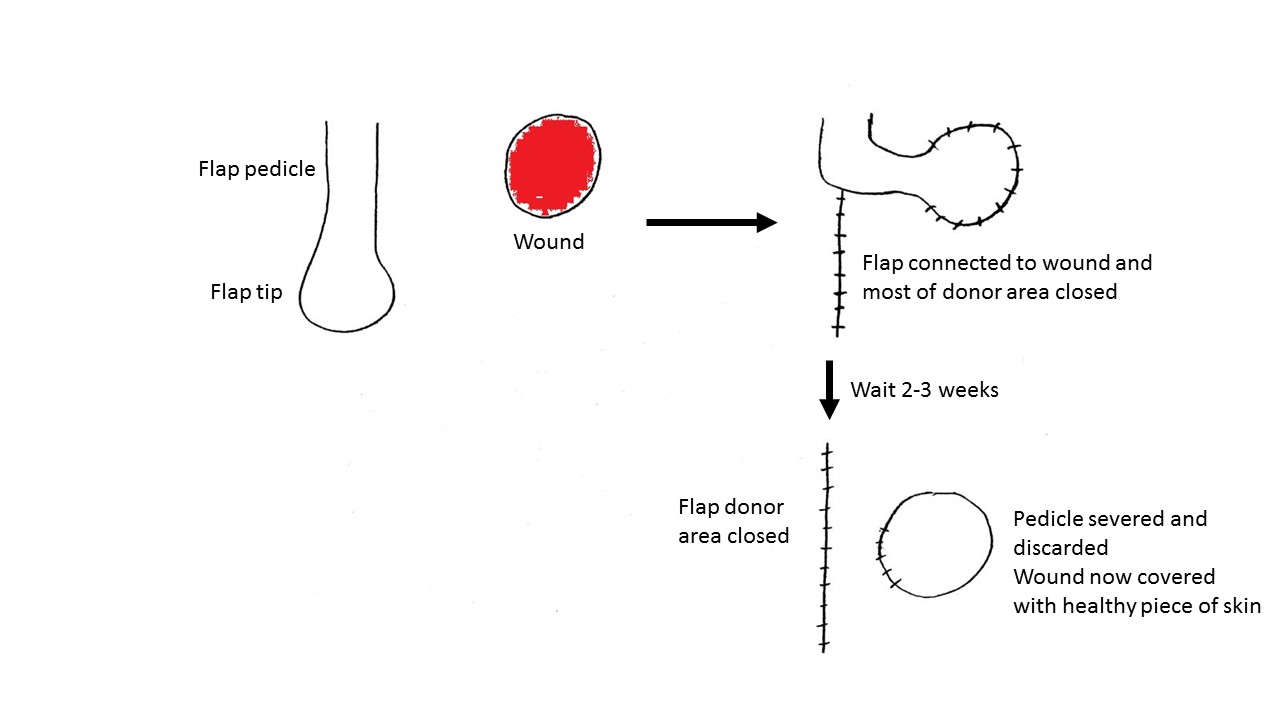We have previously discussed skin grafts and flaps (link to those posts). The major distinction in a skin flap and skin graft is blood supply. Skin flaps have a connected blood supply. Skin grafts do not have connected blood supply.
Recall that the lack of a connected blood supply limits the potential thickness of a skin graft. If the graft is too thick, the blood supply from the wound base may be inadequate and result in partial or total loss of the graft.
 A wound bed can supply nourishment to only a limited thickness of skin graft. Beyond that, there is risk of failure.
A wound bed can supply nourishment to only a limited thickness of skin graft. Beyond that, there is risk of failure.The robust blood supply of a flap allows for a much thicker piece of skin to be placed over the wound
Placing this piece of skin with a connected blood supply (flap) over the wound can take one of two major forms:
 Outline of steps for a staged flap
Outline of steps for a staged flapThe pedicle of the flap carries the blood supply to the tip. The tip of the pedicle is moved over the wound and sewn in place. The area where that flap was taken is closed. The surgery is left to heal for several weeks. In those weeks, the “tip” skin develops its own blood supply. After this period, the pedicle is severed, resulting in a healthy and thicker piece of skin than a graft.
Wound area
- Nasal tip
- Helical rim of ear
- Finger tip
- Side (ala) of nose
Donor
- Forehead
- Skin of upper neck
- Palm (thenar) skin
- Cheek
Table of some common staged flaps